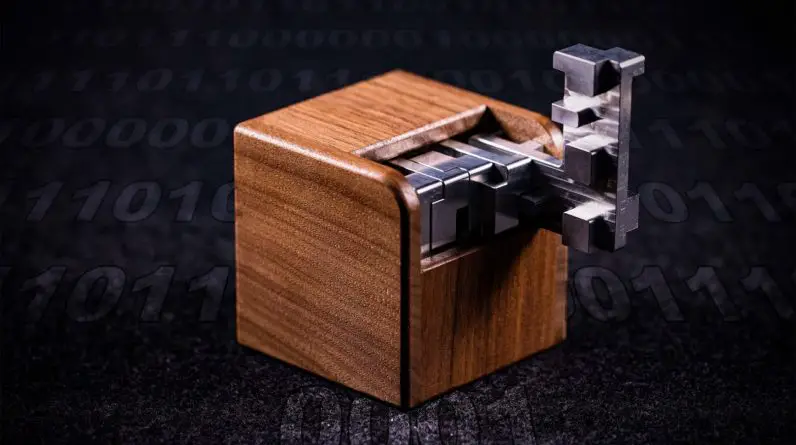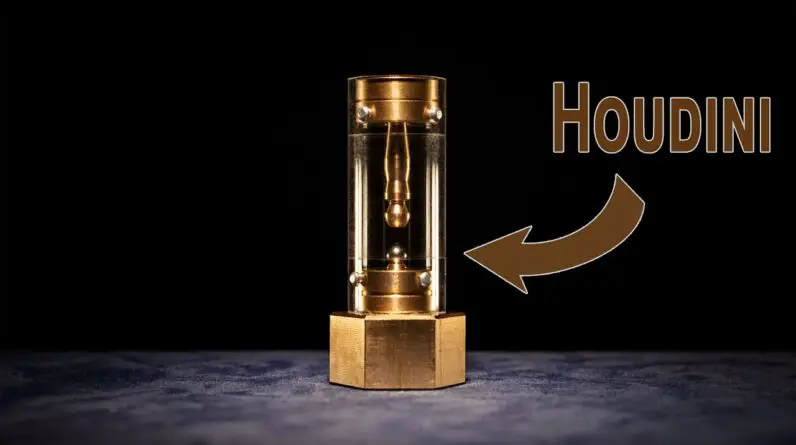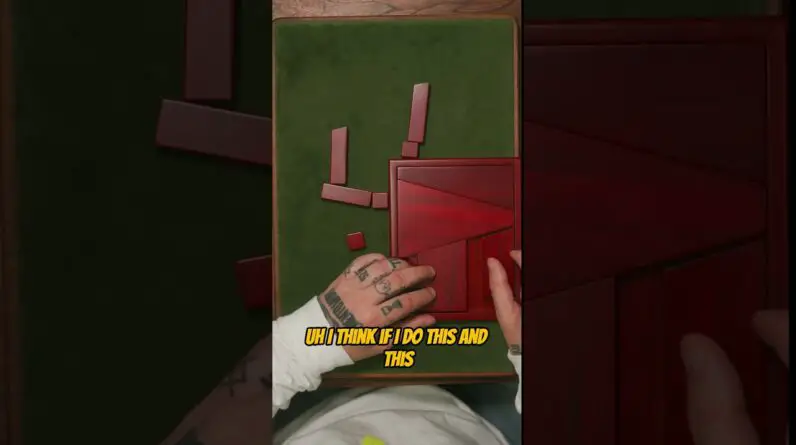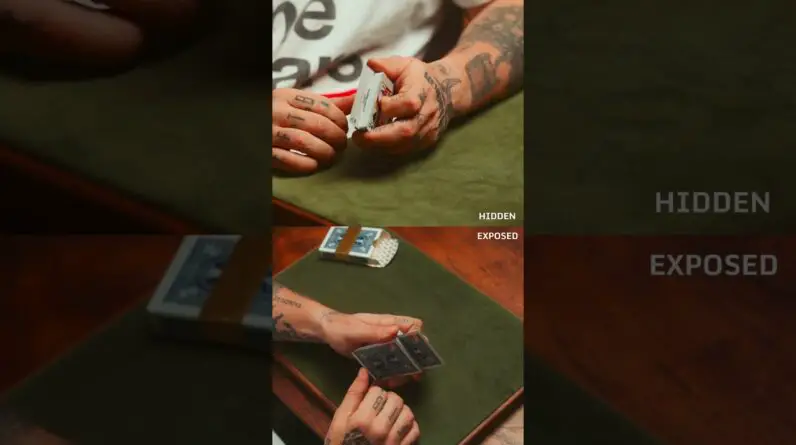
This happens when a binary sequence is converted into a mechanical puzzle!
Hi and welcome to another episode of Mr puzzle, and today I got another an Airy puzzle for you called the 5l bin designed by pit kyong and made by Eric Fuller and his team at cubic dissection in the US any puzzles on this case.
It’s a binary sequence where you need to follow a specific sequence to move the pieces in a way till a certain point and then you need to move all the steps backwards. Add another move, move forward again to the same point and then you will be able to achieve or to move the piece. Another step sounds a bit confusing, but you’re gonna see later what I’m talking about and how this is gonna work. If I’m able to solve it, because today’s the first time I’m gonna try to solving this, as you probably also noticed it’s kind of a hybrid puzzle, so that’s a hybrid made by two different materials.
So we got some aluminum pieces in here five L-shaped aluminum pieces that are inside of a what is this Walnut? I think the housing is itself, I mean you can see it probably also on camera. This looks just amazing. Absolutely high quality puzzle was released this year by the way in July. Usually, these puzzles are not super difficult, but you need to follow a certain sequence and it’s more like a fidget toy or something on the rear.
By the way, there are two more slots in here that you can operate the puzzle better with your fingers like this okay, you do not need to do this here from inside or by tilting and rotating the puzzle before it will start with this puzzle. I also would like to show you a pretty cool book. I recently got it’s called Moray motion by takiro kuroshima and it’s a collection of pictures or of patterns that, with this mask here you can create a Murray effect and they will start creating some moving patterns. So the more effect, as you probably know, is when you align two fabrics, for example, with the same structure or different structures that they are getting some patterns visible in the fabric can be quite kind of confusing. But if you apply it in the right way, it can create pretty cool effects, as here shown in this book.
So when you it’s coming with this mask here, when you place this mask over the different patterns, they will start to move and create some nice effects. Not sure how to create something like this, but this is this – is pretty cool here and wow. Here. Look at this pretty cool um. It can be very satisfying here to go through this book and study the different patterns whoa, this one’s cool.
If you would like to learn more look at this one, okay, but enough of that of enough of that puzzles in the focus, and today it’s the 5l bin and after spoiler break. You want to see my first attempt trying to solve this puzzle. Okay, so here’s the puzzle, um here – are these slots and I will operate the puzzle based on these slots here back in here that I can push the pieces to the front and now, let’s first figure out the correct sequence or where where’s the pieces that need To be taken out and where’s the piece that need to be mainly operated, so I can push all of these out. Ah, and here comes out the first piece. So this is probably my I don’t know my control piece which I need to operate in each cycle.
At first and this one then comes out in the end as the final result. Okay, so I need to operate this piece here this one up here and now I need to check if I can push this in again at another point: no I’m gonna maybe push it out. Yes, I cannot push it out at the final position here, but somewhere here in between like here and then to move the next one. I cannot Operate Now, the next ones. I need to go back again and then see if I can push it in somewhere else.
No, this was the previous position. I can push it even more outside and now, let’s see the third one here we go, so I need to get it all the way out to operate the next one, so it means I need to get this one all the way out to operate this one And take it then to the final place to disassemble it so now I need to get this one more step out and to do this, I need to go back again here. We go and get one more step out like this. If this is all the way out, I should be able to push this one also out, but it’s not moving. Ah, no, I need to go slightly back like here and now I can move it out to make the first step with the last one to get this one all the way out and to get this one all the way out.
I need to get this one. All the way in so I need to go back, so you got the point now what this means yeah an area like this, get this one in yes, exactly and then get this one in again in and now I need to can get this one out and If I can get this one out, I can get this one out in one step and to get this one all the way out and probably disassemble it. I need to get this one in again, so I need to go back again. Where was it here and then all the way out means this one one more step then go back again all the way out in back again, it’s kind of confusing, but I can tell you it’s pretty satisfying to operate. I tell you for some reason.
It definitely is so you need to get this one all the way and get this one in and then no what did I do now this one out? No, but this one need to get all the way in okay, so I moved you see, I moved in the wrong direction here we go attack and yes here we go piece number one and it seems you have like one. Two three, you have two different geometries. So these are the same here as you can see, and those here seem to be also the same and they seem to be mirrored compared to these you see, so we got two types of pieces. I will start with this one.
I will place this down here. Move it up, and now you can see why it’s so important to arrange the pieces same as they have been inside, because you can just put them back in and just slide them together again. If you did would not do this, oh I’m not sure how easy or hard it would be, therefore, always keep track of how the pieces have been in the puzzle so and now last one fits in perfectly and now we are in the disassembly position. We need to get this one in, like, I think, one or two steps, and to do this we need to go back to the beginning. We need to move this one out.
I will try to operate this now, a bit more fluent. Here we go back here. We go back again, so if it’s a bit more fluent, it might be easier to understand yeah in the first uh this or during this assembly, I had to figure out how the sequence looks like and how the steps look like now. It was easier for me to operate it’s it’s like a fidget toy. You know you just you make moves all the time and you got this sequence in your brain and you’ve just following it.
Pretty satisfying toy from difficulty point of view. I would rate this only with a two out of maximum or five from a personal point of view. If you’re not familiar with any puzzles, I think it’s definitely a three or four out of maximal five. Let me know if you agree. Let me also know if you ever tried this type of puzzle yourself.
Is it something you’re interested in hit the Subscribe button, blah blah blah as usual? I wish all of you a good 2023 we’re gonna meet again next year, so until next time keep on puzzling. Thank you.

![[1572] 8 Pound Trailer Lock Opened w/ TRASH! (Bulletproof Hitches)](https://puzzlebeat.com/wp-content/uploads/2023/10/1572-8-pound-trailer-lock-opened-w-trash-bulletproof-hitches-X9dMZ2kxrjg-796x445.jpg)



![[1571] The DUMBEST “Safe” Design I’ve Ever Seen! (Toriexon)](https://puzzlebeat.com/wp-content/uploads/2023/10/1571-the-dumbest-safe-design-ive-ever-seen-toriexon-gJrSWXFXvlE-796x445.jpg)
